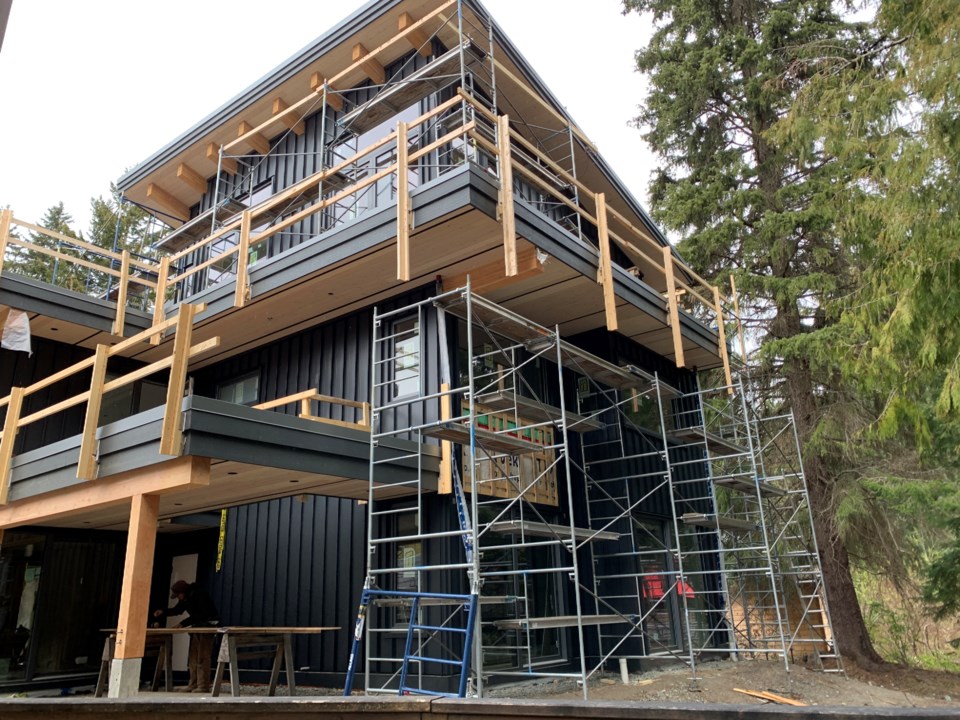Thinking about renovating? Best to plan ahead, say builders in Whistler.
In fact, there’s an alliterative approach to keep in mind when starting any new project, said Bob Deeks, owner of RDC Fine Homes in Whistler.
“Proper prior planning prevents poor performance,” Deeks said.
Fair enough, and catchy to boot.
But even with proper planning, sometimes external factors are beyond one’s control.
Aside from the public health challenges and the drop-off in tourism, the COVID-19 pandemic contributed to long delays for those hoping to complete renovations.
In Whistler, the pandemic, along with cyber-attacks and staff shortages, created a perfect storm that has led to a permitting backlog that is months long.
According to the Resort Municipality of Whistler (RMOW), there has also been a surge in building permit applications. So far in 2022, 320 applications have been received and are currently in process. The total volume of applications has been above average and indicates a surge of pent-up demand to build and renovate.
The current wait times for building permit applications in Whistler are 17 weeks for residential, 13 weeks for multifamily/commercial and nine weeks for stand-alone plumbing.
The RMOW has worked to help speed up the permitting process, and the processing time has improved since Pique reported on the problem in 2021.
“The department has had some changes, including a new manager, additional staff to assist with the digitization project, and plans to recruit an additional building official for the team,” said RMOW communications officer Claire Van Leeuwen.
“The building department is working on a digitization project that is anticipated to be fully implemented by the end of 2023. This will reduce wait times and increase efficiencies as well as make the process easier for applicants by giving more visibility into which stage a permit is at and allow for easier communication between the department and the community.”
There are multiple factors behind the increase in permitting applications for building and renovating properties in Whistler and the Sea to Sky.
According to Deeks, the pandemic has pushed more people to work from home, while many people have chosen to live in their secondary Whistler properties instead of their primary residences in Vancouver.
“Part of that was fuelled by people spending a lot more time in their recreational property because they couldn’t go to work. It really highlighted some things that they wanted to change, and then through that process, people became very adapted to working remotely. I do think there’ll be people who will not go back to the office full-time,” said Deeks.
“I think we’re going to see a segment of the population who has the financial means and resources, they will spend more time working from home, and we’ve definitely seen people who, through COVID, have transitioned and have essentially left their urban residences, and moved to their vacation residences.
“So one of the things that you see is people adapting their houses to create live-workspaces. Couples who both work [from home] are now looking to renovate houses. So they each have a dedicated proper office space along with other things.”
According to Statistics Canada, there has been a massive shift in people working from home. From April 2020 to June 2021, 30 per cent of employees aged 15 to 64 who were surveyed by the government said they performed most of their hours from home. In contrast, only about four per cent of employees did so in 2016.
If you are planning to renovate, Deeks recommends that you bring in a builder early in the process and work with them to figure out a budget that fits expectations and budget contingencies.
“I can’t emphasize enough how important it is to bring the builder in that first step and then work with them and that design team to create that vision of design that meets your budget expectations. Spend time planning to make sure that as many of those details are determined before you start construction,” said Deeks.
One of the factors that plagues the renovation industry is a reputation for being unable to meet people’s expected budgets and deadlines, Deeks added.
“Part of that is reflected in people rushing in to start work before they have all the decisions made,” he said.
“So then you end up in this spiral of delays because you make changes and ongoing cost increases as the scope of work changes, and the builder becomes super challenged to identify what the cost of the change is at the same time as they’re trying to get it finished based on the client’s original schedule expectation.”




